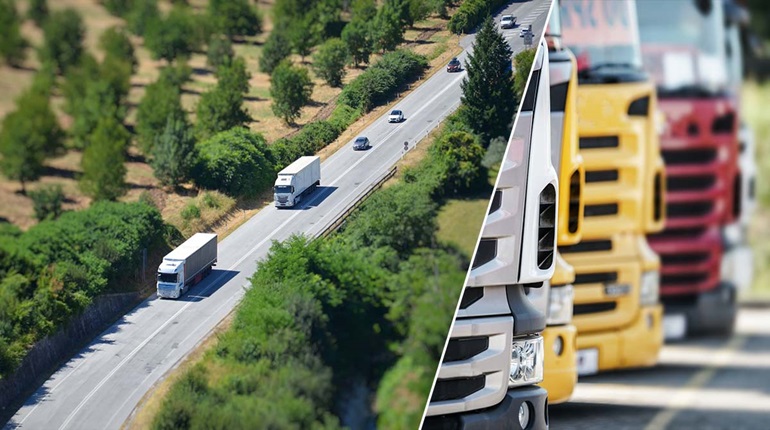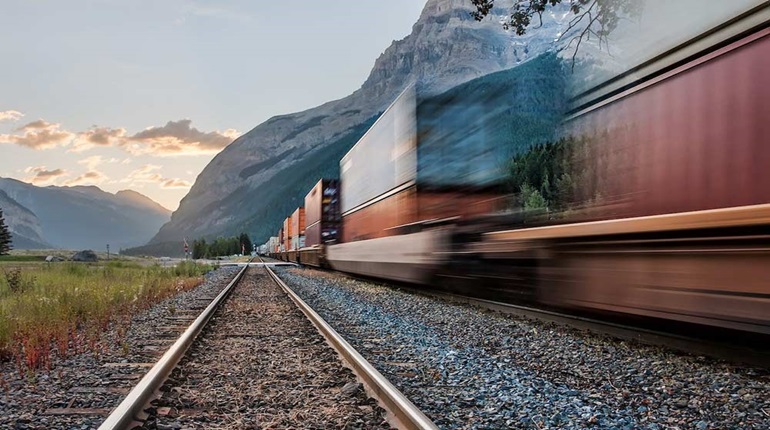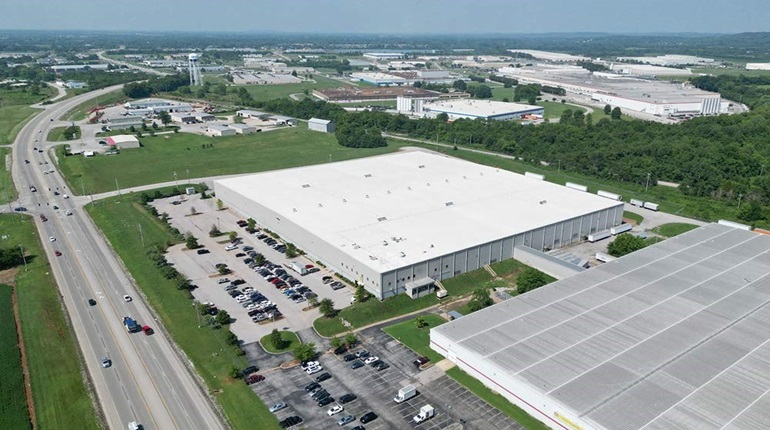
In the intricate network of global trade and commerce, road freight transport forms a vital link, bridging the gap between producers and markets, factories and consumers. Its role, often understated, is central to the smooth operation of modern economies, ensuring that goods reach their destinations safely, efficiently, and in time.
The diversity of road freight vehicles and their different capacities
Exploring the variety of vehicles in road freight and their specific functions
At the heart of road freight are the vehicles themselves, each tailored to suit specific needs and purposes. The variety is vast, from the ubiquitous flatbeds and box trucks to specialized refrigerated units and tankers. Each vehicle type serves a distinct function: flatbeds are ideal for heavy or oversized loads that might not fit within enclosed spaces, while refrigerated units are essential for transporting perishable goods under controlled temperatures. Tankers, on the other hand, are designed for liquid cargo, often hazardous, necessitating strict adherence to safety protocols.

Integration of multimodal transport in road freight
How road freight is part of a larger multimodal transport system
Multimodal transport, the combination of different modes of transportation like road, rail, and sea, plays a crucial role in optimizing the logistics chain. Road freight often serves as the initial or final leg of a multimodal journey, providing the essential link between larger transport hubs and the final destination. The integration of road transport with rail and sea freight maximizes efficiency, reduces transportation costs, and can lower the environmental impact by leveraging the strengths of each mode.
- Optimizing logistics chain: Multimodal transport aims to optimize the logistics chain by selecting the most appropriate modes of transportation for different segments of the journey. Road freight often serves as a crucial component, especially for the first or last mile, where other modes may be less practical.
- Cost efficiency: By using a combination of transportation modes, companies can reduce transportation costs. Road transport may be cost-effective for shorter distances or areas with limited access to other modes, while rail and sea transport can be more cost-efficient for long-distance and bulk cargo shipments.
- Environmental impact: Multimodal transport can contribute to reducing the environmental impact of freight transportation. For instance, choosing rail or sea transport for long-distance hauls can be more fuel-efficient and emit fewer greenhouse gases compared to relying solely on road transport.
The railway’s role in goods transport
Detailing the synergy between road freight and rail transport
Rail transport is a key component in the multimodal transport system, especially for long-distance hauls. It offers an efficient and environmentally friendly alternative for moving large quantities of goods overland. The interplay between road and rail transport is evident in scenarios where road freight handles the collection and distribution of goods, while rail is used for the long-haul segment. This integration ensures a balance between the speed and flexibility of road transport and the capacity and sustainability of rail transport.
Maintenance and servicing, the key to long term efficiency
Importance of regular vehicle maintenance
The capacity of these vehicles is a critical consideration. Payload limits are regulated for safety and efficiency, ensuring that roads and vehicles are not unduly burdened. The volume capacity of trucks varies, with some designed for bulk goods and others for smaller, more delicate items. This versatility allows road freight to cater to a wide range of industries, from agriculture and manufacturing to retail and e-commerce. However, the effective operation of these vehicles hinges on regular maintenance and servicing.
Routine inspections
Scheduled inspections of critical vehicle components such as the engine, brakes, transmission, tires, and lighting systems are performed at predetermined intervals. These inspections are crucial to verify that these components are in proper working order. Here’s a closer look at some of the aspects covered during routine inspections:
- Engine: Inspection of the engine includes checking for oil leaks, coolant levels, and the condition of belts and hoses. It ensures that the engine is operating efficiently and without any potential issues.
- Brakes: Brake inspections are crucial for safety. Mechanics examine brake pads, drums, rotors, and hydraulic systems to ensure that the braking system is in excellent condition and capable of stopping the vehicle safely.
- Transmission: The transmission system is inspected to confirm that gears shift smoothly and that there are no signs of wear or damage that could lead to breakdowns or accidents.
- Tires: Tire inspections involve checking tire pressure, tread depth, and overall condition. Proper tire maintenance is essential for road safety and fuel efficiency.
- Lighting systems: The lighting systems, including headlights, taillights, brake lights, and turn signals, are inspected to ensure they function correctly. Proper lighting is critical for both safety and regulatory compliance.
Safety inspections
Comprehensive safety inspections are conducted to identify and address potential safety hazards or issues promptly. This includes checking safety features, load securing mechanisms, and emergency equipment.
- Safety features: Inspections verify that safety features such as airbags, seatbelts, and anti-lock braking systems (ABS) are in proper working order to protect the driver in case of an accident.
- Load securing mechanisms: Ensuring that cargo is properly secured and distributed within the vehicle is essential. Safety inspections assess the effectiveness of load securing mechanisms to prevent accidents caused by shifting cargo.
- Emergency equipment: It’s vital to confirm that emergency equipment, such as fire extinguishers, reflective triangles, and first-aid kits, is readily accessible and in good condition for use in emergencies.
Emissions control
Regular checks and maintenance of emission control systems ensure compliance with emissions regulations. This involves inspecting exhaust systems and emission-related components.
- Exhaust systems: Inspection of the exhaust system checks for leaks, damage, and the condition of catalytic converters and mufflers. Proper functioning of these components is necessary to reduce harmful emissions.
- Emission-related components: Maintenance includes inspections of emission-related components, such as oxygen sensors and EGR (Exhaust Gas Recirculation) systems, to ensure they are working optimally and minimizing the vehicle’s environmental impact.
When searching for a certified workshop to maintain and service your road freight vehicles in Europe, consider several essential factors. Prioritize workshops authorized by your truck’s manufacturer, as they have the manufacturer’s endorsement, ensuring expertise and adherence to high standards. Look for the ASEP (Authorized Service and Parts Provider) designation, indicating workshop authorization for both service and genuine parts specific to your truck brand. It’s crucial that the workshop exclusively uses original equipment manufacturer (OEM) parts, providing authentic components designed for your truck model.

Logistics centers – The starting point of goods movement
The role of logistics centers in the coordination of goods transportation
The journey of goods from origin to destination is a coordinated process, often beginning at logistics centers. These centers are more than mere storage facilities; they are the hubs where goods are sorted, consolidated, and dispatched. Efficient handling and storage at these centers are crucial for minimizing delays and damage to goods. The dispatch process involves careful planning, taking into account the most efficient routes and timely delivery to the next point, be it another logistics center, a retail outlet, or the end consumer.
Sorting and consolidation
Within these centers, goods undergo sorting and consolidation processes. This involves organizing items based on their destination, size, type, or other relevant criteria. By grouping items together, logistics centers optimize the loading and transportation process, reducing handling and transit times. Many logistics centers offer value-added services such as packaging, labeling, quality control, and customization based on specific customer requirements.
Planning and minimizing delays
Efficient handling and storage are paramount at logistics centers to minimize delays in the supply chain. Timely loading and unloading of goods, accurate inventory management, and effective coordination between various stakeholders contribute to the overall efficiency of the logistics process. The dispatch process is a crucial aspect of logistics center operations. It involves meticulous planning to determine the most efficient routes and schedules for goods to reach their next point in the supply chain. This could be another logistics center, a retail outlet, or the end consumer. Dispatch planning considers factors such as distance, traffic conditions, and delivery deadlines to optimize routes and ensure timely deliveries.
Tracking and technology in logistics
Exploring the impact of technological advancements
The road freight industry has increasingly embraced technology to improve efficiency and tracking. Systems like Electronic Logging Devices (ELDs) ensure compliance with driving hours regulations and help in route planning and monitoring. GPS tracking provides real-time location data, essential for efficient route planning and timely delivery. Advanced telematics systems offer insights into vehicle performance, fuel consumption, and preventive maintenance needs, further optimizing fleet management.
The challenges and solutions in the industry
Addressing the operational challenges and solutions
Navigating the challenges of road freight requires not just an understanding of vehicles and logistics but also a deep knowledge of route planning, traffic management, and contingency planning for unexpected delays. Strategies to mitigate these challenges include using advanced route planning software, maintaining flexibility in scheduling, and having backup plans in case of unforeseen circumstances such as traffic congestion or weather disruptions. Sustainability is also a growing concern, with the industry exploring alternative fuels and electric vehicles to reduce its carbon footprint.

Drivers – The human element in road freight
The crucial role of drivers in the road transport industry
At the center of all these activities are the drivers, the unsung heroes of the road freight industry. Their role extends beyond steering the wheel; they are responsible for the safe and timely delivery of goods, adhering to driving regulations, and often acting as the face of the company to clients and receivers. Investing in their training and welfare is paramount, not only for compliance and efficiency but also for their well-being and job satisfaction.
Hours of service (HOS)
One critical aspect of road freight regulations is the Hours of Service (HOS). These regulations dictate the maximum number of hours a driver can operate a commercial vehicle within a given period. For example, in the United States, drivers are typically allowed a maximum of 11 consecutive hours of driving within a 14-hour workday. Rest breaks and daily or weekly driving limits are also prescribed by these regulations to prevent driver fatigue and enhance safety on the road. Distracted driving laws apply to commercial drivers as well, and they prohibit the use of mobile phones and other distracting devices while operating vehicles.
Maximum load limits
Another essential set of regulations pertains to maximum load limits. These regulations define the legal weight restrictions for trucks and their cargo. Different types of roads and bridges may have specific weight limits that drivers must adhere to. Ensuring proper load distribution and securing cargo correctly are crucial for both safety and compliance.
Driver’s license requirements
Drivers of commercial vehicles must possess the appropriate commercial driver’s license (CDL) for the type of vehicle they operate. Various classes of CDL exist, each allowing the operation of specific vehicle categories. Moreover, certain cargo types, such as hazardous materials (Hazmat), may require additional endorsements on the CDL to demonstrate proficiency and compliance with specialized handling requirements. Electronic Logging Devices (ELDs) have become an integral part of ensuring compliance with HOS regulations. These devices electronically track and record a driver’s hours of service, replacing traditional paper logbooks. They help prevent falsification of records and improve the accuracy of tracking driving hours.
These regulations and considerations underscore the complexity and responsibility associated with being a driver in the road freight industry. Adherence to these rules not only ensures compliance but also contributes to road safety, efficient operations, and environmental sustainability.
Looking at the future of transport
Reflecting on the evolving landscape of the road freight industry
As the road freight industry continues to evolve, it faces both challenges and opportunities. The adoption of autonomous driving technology, the increasing importance of sustainability, and the continuous need for efficient logistics solutions are shaping the future of road freight. Adapting to these changes while maintaining the core principles of safety, efficiency, and reliability will be crucial for the industry’s growth and sustainability. The integration of advanced data analytics, the exploration of alternative fuels, and the development of smarter logistics networks represent just a few of the pathways the industry is exploring to remain at the forefront of global commerce.
In conclusion, road freight transport is a dynamic and multifaceted industry, essential to the global supply chain. Its success relies on a complex interplay of well-maintained and suitable vehicles, efficient logistics operations, advanced technology, adherence to regulations, and the skill and well-being of the drivers. As it continues to adapt to changing demands and emerging technologies, freight transport remains a cornerstone of the global economy, connecting businesses, markets, and communities.
